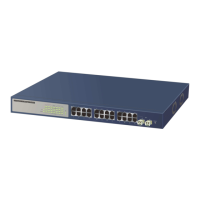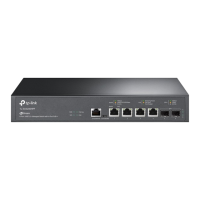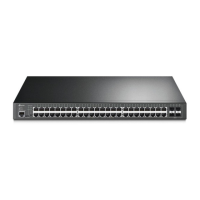Note:
1. The user is automatically in User EXEC Mode after the connection between the PC and
the switch is established by a console port or by a telnet connection.
2. Each command mode has its own set of specific commands. To configure some
commands, you should access the corresponding command mode firstly.
Global Configuration Mode: In this mode, global commands are provided, such as
the Spanning Tree, Schedule Mode and so on.
Interface Configuration Mode: In this mode, users can configure one or several
ports, different ports corresponds to different commands
a). Interface gigabitEthernet: Configure parameters for an Ethernet port, such as
Duplex-mode, flow control status.
b). Interface range gigabitEthernet: The commands contained are the same as that
of the Interface gigabiteEthernet. Configure parameters for several Ethernet
ports.
c). Interface link-aggregation: Configure parameters for a link-aggregation, such as
broadcast storm.
d). Interface range link-aggregation: Configure parameters for multi-trunks.
e). Interface vlan: Configure parameters for the vlan-port.
Vlan Configuration Mode: In this mode, users can create a VLAN and add a
specified port to the VLAN.
3. Some commands are global, that means they can be performed in all modes:
show: Displays all information of switch, for example: statistic information, port
information, VLAN information.
history: Displays the commands history.
1.3 Security Levels
This switch’s security is divided into two levels: User level and Admin level.
User level only allows users to do some simple operations in User EXEC Mode; Admin level allows
you to monitor, configure and manage the switch in Privileged EXEC Mode, Global Configuration
Mode, Interface Configuration Mode and VLAN Configuration Mode.
For logging on remotely by Telnet or SSH, you need a username and password (both admin by
default) to get the privilege to the User level. Guest users are restricted to access the CLI. Users
16

